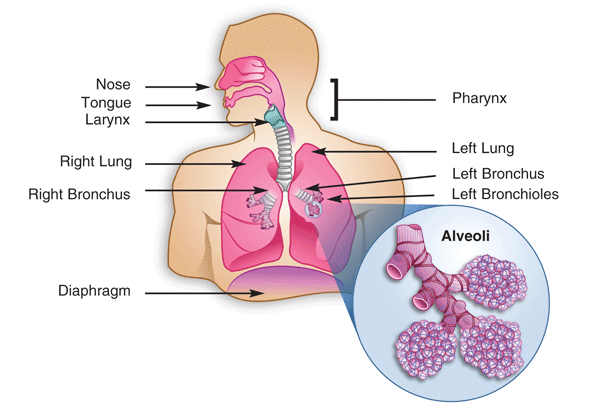
Organ Systems
Respiratory System
The respiratory system is simply a network of tissues and organs that enables breathing, or ventilation, including inspiration and expiration of air from the lungs. The respiratory system enables ventilation by creating pressure differences that allow air to flow in and out of the lungs. These pressure differences occur when the diaphragm, a muscle in the chest, contracts and relaxes. The respiratory system allows atmospheric oxygen to be transported into human cells, which is crucial to everyday survival. Besides transporting oxygen, the respiratory system also removes waste products, such as carbon dioxide, from the body. The respiratory system is in charge of functions such as breathing, talking, smelling, protecting the airways, and regulating the temperature and humidity of the air that goes into the body. The respiratory system is composed of the mouth, nose, pharynx (throat), sinuses, trachea, bronchial tubes, alveoli, larynx (voice box), and lungs.
Diagram of the Respiratory System

Image obtained from: https://search.creativecommons.org/photos/81c08769-de3f-41f9-81c0-6c145132727d
"File:Human Lungs.gif" by UNSHAW is licensed under CC BY-SA 4.0
Resources
Canadian Lung Association. (2019, January 28). Respiratory system. https://www.lung.ca/lung-health/lung-info/respiratory-system.
Cleveland Clinic. (2020, January 24). Respiratory system. https://my.clevelandclinic.org/health/articles/21205-respiratory-system#:~:text=The%20respiratory%20system%20is%20the,waste%20gases%20like%20carbon%20dioxide.
National Cancer Institute. (n.d.). Introduction to the respiratory system. https://training.seer.cancer.gov/anatomy/respiratory/.